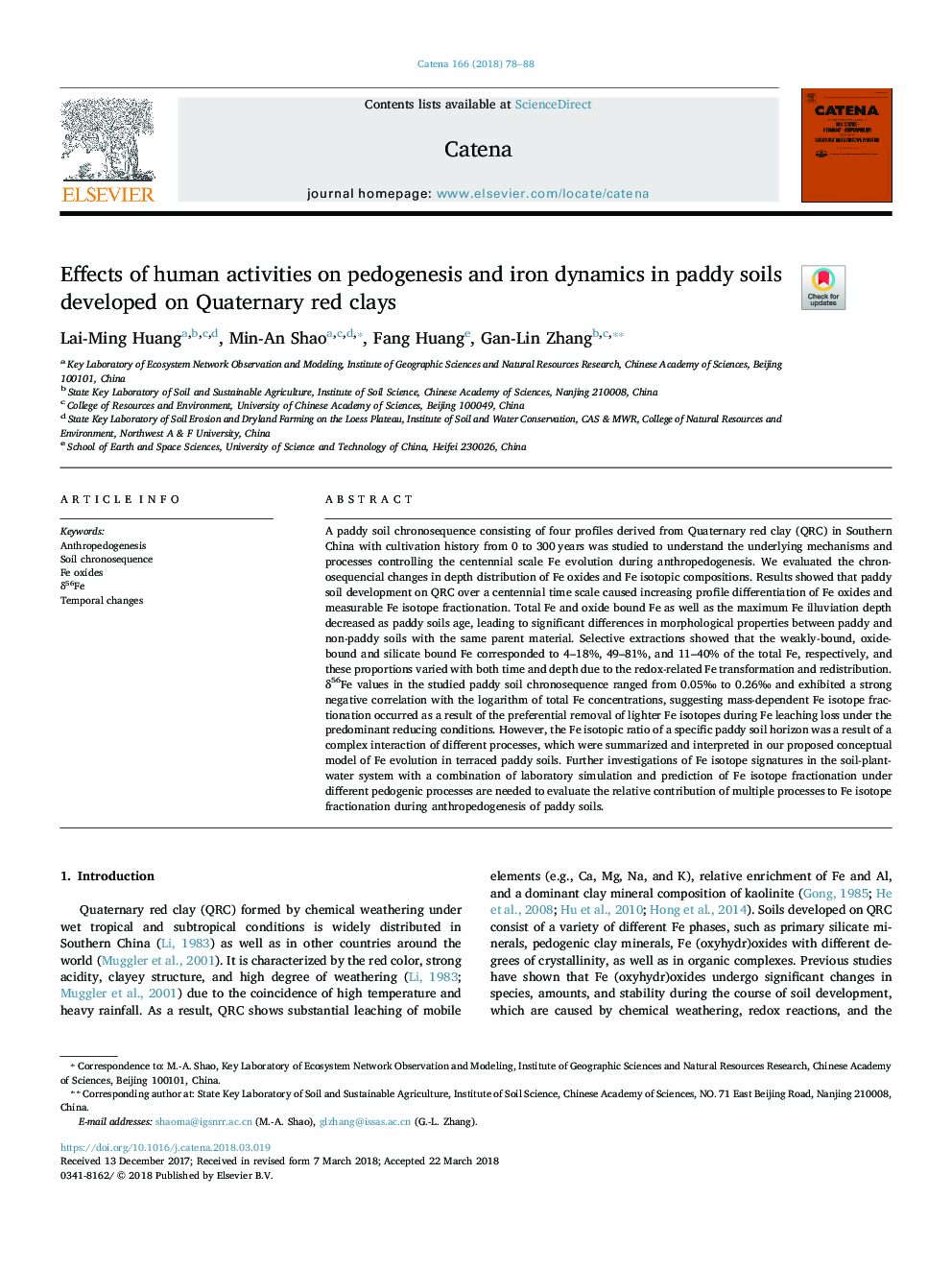| Article ID | Journal | Published Year | Pages | File Type |
|---|---|---|---|---|
| 8893524 | CATENA | 2018 | 11 Pages |
Abstract
A paddy soil chronosequence consisting of four profiles derived from Quaternary red clay (QRC) in Southern China with cultivation history from 0 to 300â¯years was studied to understand the underlying mechanisms and processes controlling the centennial scale Fe evolution during anthropedogenesis. We evaluated the chronosequencial changes in depth distribution of Fe oxides and Fe isotopic compositions. Results showed that paddy soil development on QRC over a centennial time scale caused increasing profile differentiation of Fe oxides and measurable Fe isotope fractionation. Total Fe and oxide bound Fe as well as the maximum Fe illuviation depth decreased as paddy soils age, leading to significant differences in morphological properties between paddy and non-paddy soils with the same parent material. Selective extractions showed that the weakly-bound, oxide-bound and silicate bound Fe corresponded to 4-18%, 49-81%, and 11-40% of the total Fe, respectively, and these proportions varied with both time and depth due to the redox-related Fe transformation and redistribution. δ56Fe values in the studied paddy soil chronosequence ranged from 0.05â° to 0.26â° and exhibited a strong negative correlation with the logarithm of total Fe concentrations, suggesting mass-dependent Fe isotope fractionation occurred as a result of the preferential removal of lighter Fe isotopes during Fe leaching loss under the predominant reducing conditions. However, the Fe isotopic ratio of a specific paddy soil horizon was a result of a complex interaction of different processes, which were summarized and interpreted in our proposed conceptual model of Fe evolution in terraced paddy soils. Further investigations of Fe isotope signatures in the soil-plant-water system with a combination of laboratory simulation and prediction of Fe isotope fractionation under different pedogenic processes are needed to evaluate the relative contribution of multiple processes to Fe isotope fractionation during anthropedogenesis of paddy soils.
Related Topics
Physical Sciences and Engineering
Earth and Planetary Sciences
Earth-Surface Processes
Authors
Lai-Ming Huang, Min-An Shao, Fang Huang, Gan-Lin Zhang,
